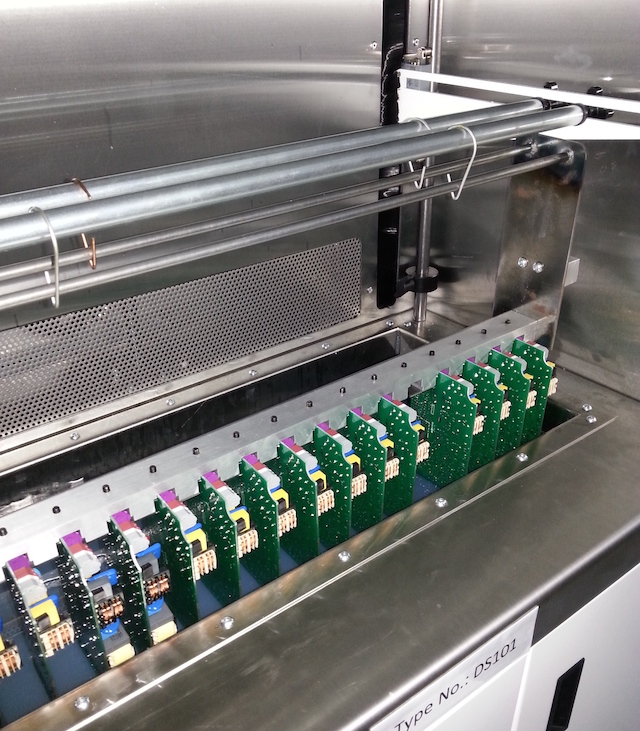
There are design guidelines that can be used to help make conformal coating of circuit boards using the dip process a lot easier.
Having these specific design rules for dipping conformal coating can help save a lot of time, money and trouble on the production line.
Here are a list of rules and guidelines that could be considered.
- Design the board so the masking components are at one end of the circuit. This allows the board to be dipped to a depth before the connectors are coated.
- Design to hold the board correctly. Make it easy to hold the circuit easily.
- Design the fixture correctly to avoid coating contamination. Don’t let the fixture get coated.
- Match the coating material to the dip process. Ensure compatibility.
- Design the board to drain to a corner. It ensures less build up is found on the board.
- Avoid using components that can hold conformal coating. When the board drains ensure the component can too.
- Use the correct components. Use components that are easy to mask.
To find out more click dipping design rules for conformal coating.
Why use conformal coating design rules?
Circuit board design rules and guidelines, when using conformal coating, can save you money, time and problems.
Nexus, the independent conformal coating resource, have split the conformal coating into sections.
They include:
- General design
- Selective Robot
- Dipping
- Batch Spraying
- Parylene
Each has overlapping rules and guidelines that also can be very specific to the application process.
Why it all can go wrong in the design stage for conformal coating
Most companies have successfully adopted Design for Manufacture (DFM) principles.
They have increased the level of communication between design teams and those required to manufacture the product, to eliminate or reduce the number and variety of production challenges.
However, this is not always the case.
Conformal coating is not simply a consumable material.
Unfortunately, for too many designers, conformal coating is simply a part number, to be applied to circuit boards.
For companies embracing lean philosophies and applying coatings, this failure to appreciate the subtleties of the application process can result in an un-coatable (at least as specified) assembly process.
The design rules for conformal coating are straightforward.
Follow them and you can save money and time in your application process.
However, if the rules are not followed, the resultant circuit board design can challenge even the most sophisticated conformal coating system and its operator to achieve the finish desired.
It is almost certain that the majority of these ‘nightmare’ scenarios could have been headed off during the design and or prototyping stages of development.
Find out how we can help you with your conformal coating application selection now.
Contact us to discuss your needs and let us explain how our coating equipment could work for you.



